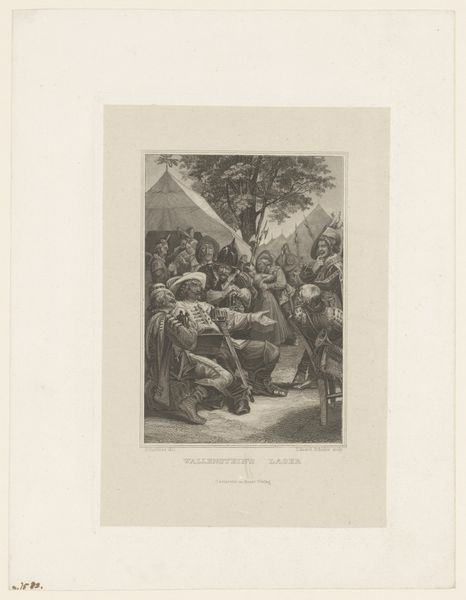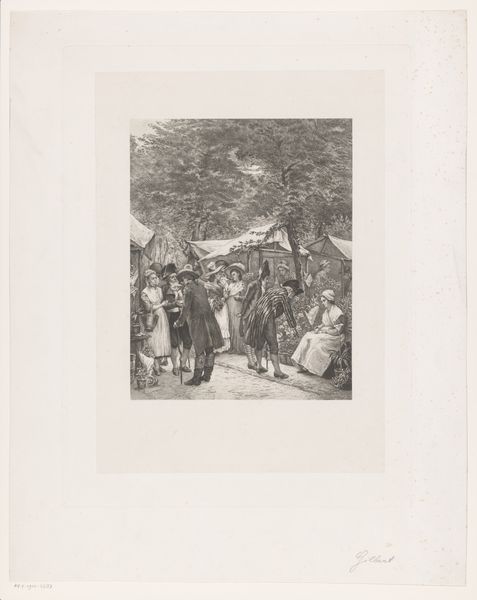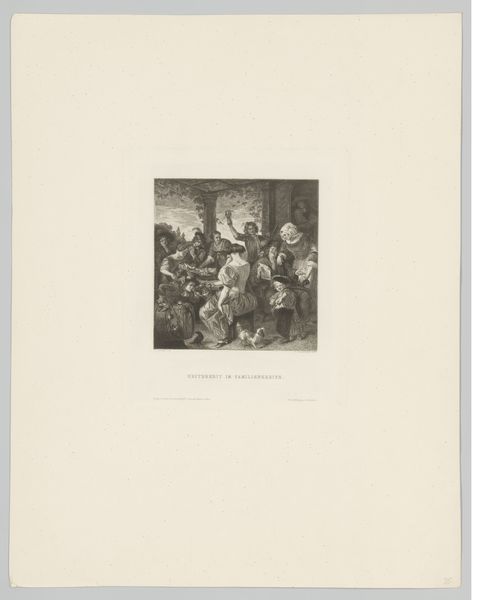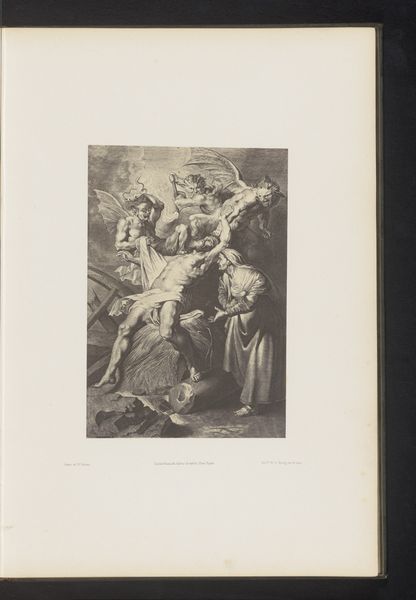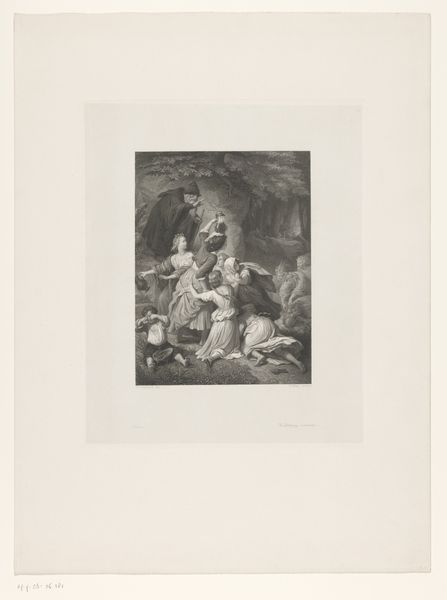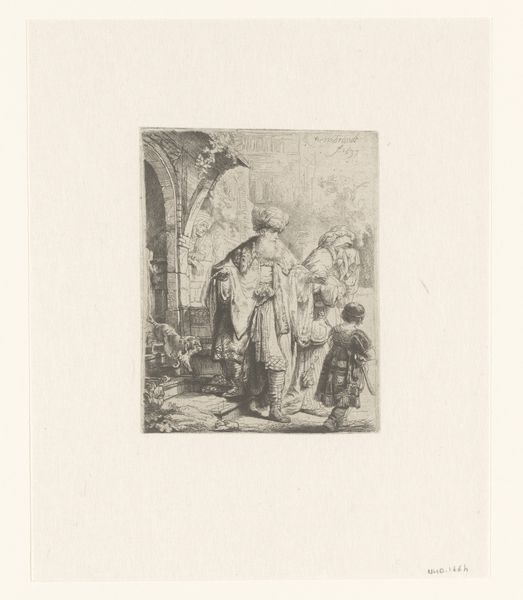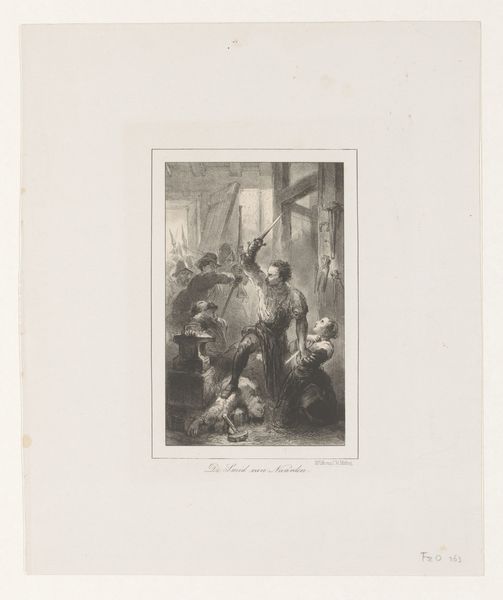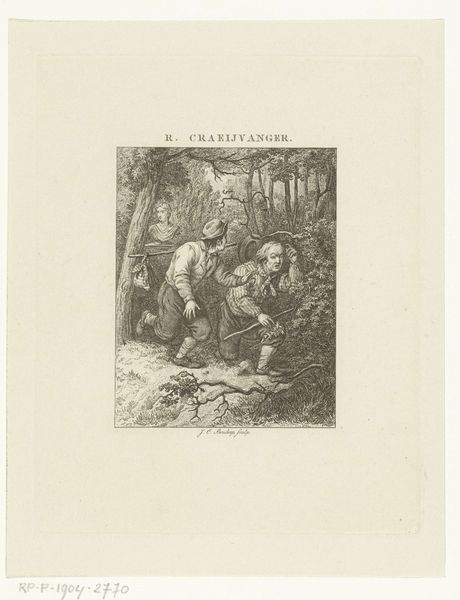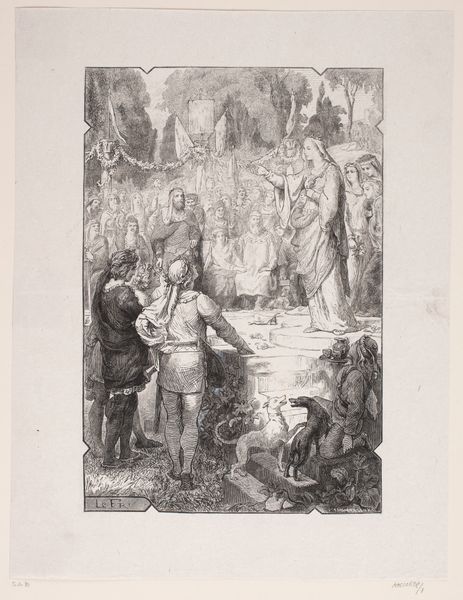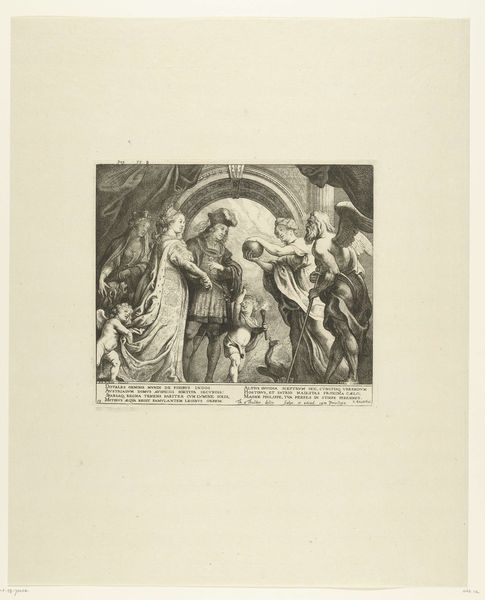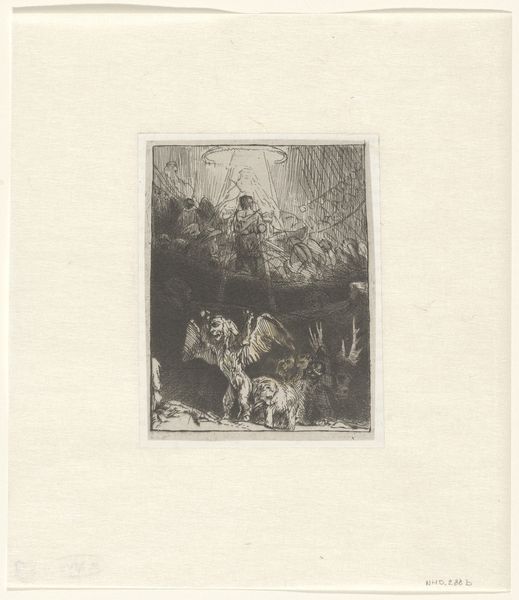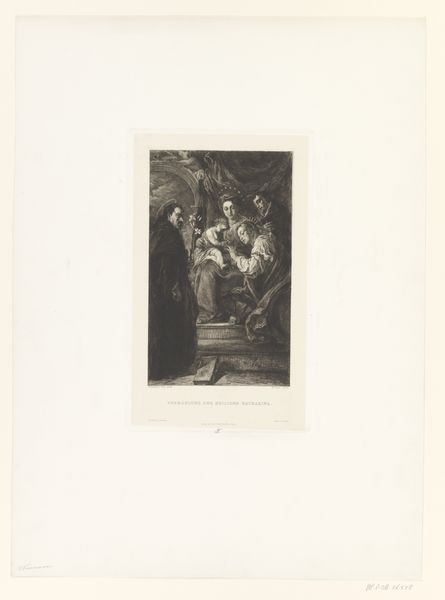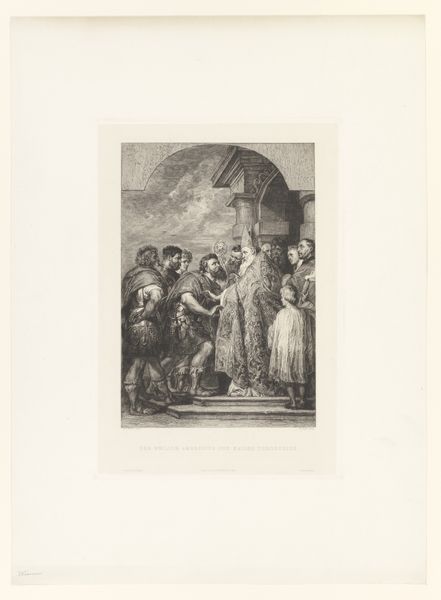
Dimensions: 138 × 107 mm (plate); 296 × 222 mm (sheet)
Copyright: Public Domain
Editor: We're looking at "The Days of Noah," an etching by James Smetham from 1860. The level of detail is incredible, almost dreamlike, but it has this haunting, unsettling mood. What's your take on it? Curator: Haunting is a great word. It feels like a memory, filtered through longing and perhaps regret. Notice how Smetham contrasts the solid darkness, that looming chasm on the left, with the strange shaft of light illuminating a select few. What do you think that stark division might suggest? It always gets me thinking... Editor: Maybe about being chosen or being left out? It feels a bit like looking into a different world. Curator: Exactly! And consider the historical context: Smetham was deeply religious, struggling with depression throughout his life. He saw the world in very dramatic terms – good and evil, salvation and damnation. Maybe that's part of why this work feels both so personal and epic at the same time. What details stand out for you? Editor: I keep coming back to the group on the right – almost idyllic. Like they are already safe. Curator: See how they’re framed by the lush foliage, cradling a babe…while, everyone else is rushing, anxious. Smetham captures the calm *before* the storm, the last whispers of ordinary life before chaos takes over. It's like he's whispering: “What does it all *mean*? Why them and not us?” It is almost too personal, isn't it? Editor: It's much more powerful knowing his background – it’s more than just a history piece. It's deeply felt. Curator: I couldn't agree more! Every viewing feels like a new whisper.
Comments
No comments
Be the first to comment and join the conversation on the ultimate creative platform.
